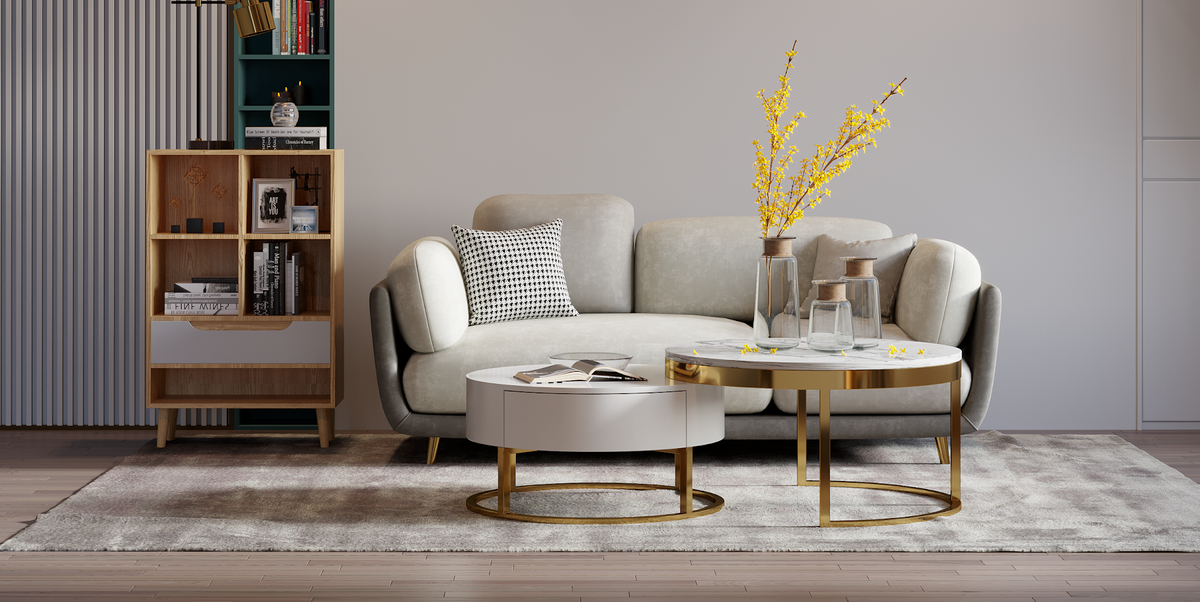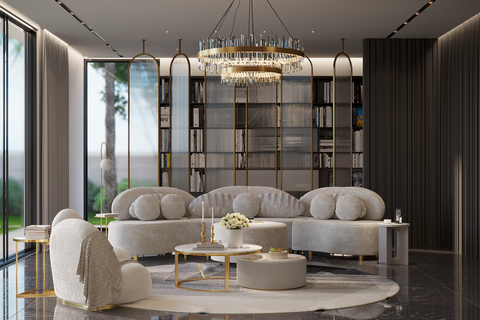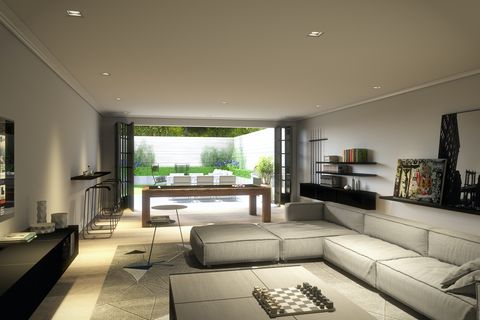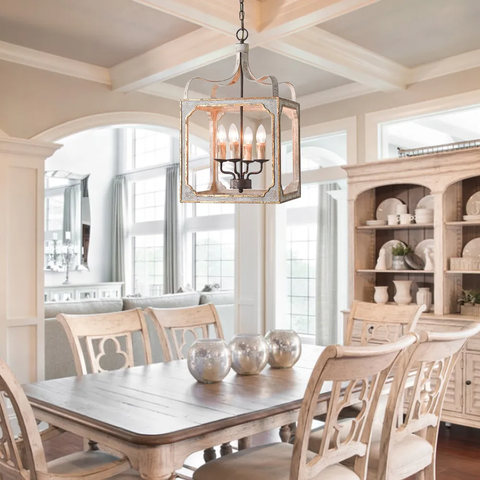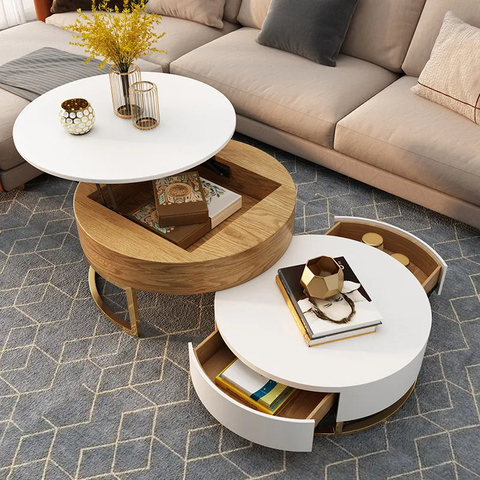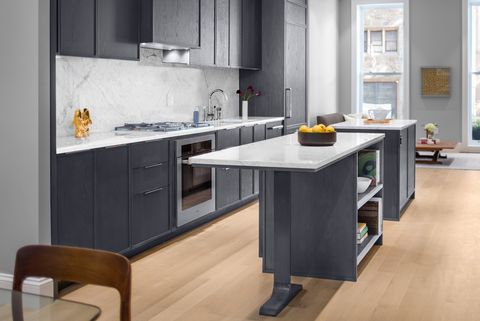In a world where we’ve been spending endless hours at home, it’s totally understandable if you’re feeling blah-ed with your interiors. Luckily, some of the latest decor trends feel custom-tailored to our new WFH lifestyle. Furniture and accents are curvier and comfier, designed to make the most of your space and elevate the experience of staying in. If you’re in the mood for a refresh — whether that means a complete overhaul or just a few tweaks here and there — it’s a good time to get redecorating. Check out the designer-approved ideas below.
Soften Up Your Seating
Just as leggings and sweats have replaced jeans and slacks in our new normal, cozy seating that’s as fit for napping as it is for virtual networking is smart swap for anything overly stiff of stodgy. An ideal replacement for a not-so-cushy couch, for example? Homary’s Curved Sectional Sofa, a midcentury-style piece with oversize cushions upholstered in easy-to-clean performance velvet. It’s roomy and inviting — and thanks to the modular design, you can reconfigure it to suit your needs, whether you’re working, TV-watching, or entertaining.
Bring the Outdoors In
We’re all craving a little more nature these days (cabin fever, anyone?), so design elements that create or accentuate a view are in demand, reports Adam Meshberg, founder and CEO of architecture and interior design firm Meshberg Group. Some of the biggest requests include “sliding glass doors, oversized windows, and NanaWalls, which are bi-folding doors and glass wall systems,” he says. If you’re looking for a smaller revamp, create a natural vibe with earthy accents like a woven pendant in the entryway, wicker baskets in the bedroom, or air plants hanging in the shower.
Embrace the Lived-in Look
The easiest way to help your space feel even more welcoming is to sprinkle in items that look lovingly worn or collected over time. All you need are a few well-placed pieces. Try a distressed mirror or vintage-inspired lighting like this Square Lantern from Homary; with a wood and metal frame and candle-like bulbs, it gives a room a warm glow and an Old-World, French Country feel.
Make Your Furniture Work Harder
Many of our homes are now serving as offices, daycares, and gyms all in one, which has led to multifunctional pieces having a moment. “There is an increased demand for modular furniture that can be assembled in several ways and adapt to several needs, like working, eating, and socializing,” confirms Sara Ianniciello, director of design for Whitehall Interiors in Manhattan. One good example? The Nesting Wood Coffee Table from Homary, which features a top that transforms into a raised writing desk, with a cubby for stashing supplies and hidden drawers offering even more storage.
Get Darker in the Kitchen
With all the extra hours we’re putting in at our stoves instead of eating out these days, it’s no wonder many of us are craving a cookspace that feels a bit more fun. “We’re seeing homeowners move away from light and all-white palettes toward darker hues,” Meshberg says. The deeper shades “create a more distinctive, luxurious feeling.” If you’re intrigued but don’t want a kitchen entirely awash in color, consider pairing rich oak or walnut cabinets with lighter countertops and flooring — a “safer” choice with visual contrast.
Max Out Your Cookspace
Some people have always considered their kitchen a spot for prepping meals and getting work (or homework) done, but it’s even more common now that we’re more homebound. Enter: The double island. With this feature, a wet island on one side houses a food-prep station along with a dishwasher, sink, or cooktop. The dry island on the other side is more of a lounge-y spot with seating and storage. The idea, says Meshberg, is to keep the socializing, working, and eating in the kitchen, with more food prep space so that none of the messiness gets in the way.
Hide Your Appliances
As for making that multi-use space a little more inviting, it’s all about integrating or concealing the kitchen’s inner workings to give it a cleaner, sleeker look, Meshberg says. In other words, the days of seeing a suite of stainless steel appliances, an industrial hood, and even hardware are fading away. Solutions include purpose-built counters that camouflage ranges, espresso makers, and similar items. Easier fixes include drilling strategic holes in existing cabinets for extension boards so that you don’t need to bring smaller appliances out of their hiding places to use them. “A concealed kitchen is seamless and feels less cluttered,” she says. “It provides a sense of visual order and wellness.”
Refresh Your Wall Space
Wellness at home in a post-pandemic world is more valued than ever, and there’s one rising trend that offers both peace of mind and fresh air: living walls. These are just what they sound like — a wall or part of a wall covered with growing greenery — and there are many ways to pull one off, from hanging plants vertically in a group to installing modular, hydroponic panels that deliver water and nutrients electronically. We’ll be seeing more and more of them, not only “because indoor plants have a calming effect and promote clean air,” according to Ianniciello, but also because, well, they just look great. “From an interior design perspective, there’s something about a verdant green that makes a space more lively and cheerful. Not to mention, it complements every palette.”
This content is created and maintained by a third party, and imported onto this page to help users provide their email addresses. You may be able to find more information about this and similar content at piano.io

